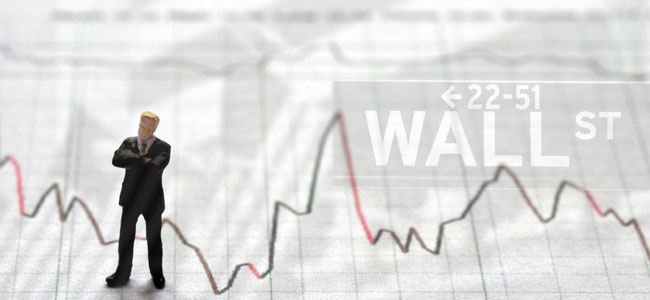The Dodd-Frank Wall Street Reform Act (aka “Dodd-Frank”) — named after Senator Chris Dodd and Representative Barney Frank — was signed into effect by President Barack Obama slightly more than five years ago (July 2010). It was designed to provide needed reforms in the wake of the financial crisis that led to massive bank and financial company bailouts in 2008.
The primary goal of Dodd-Frank included market stabilization by ensuring more transparency involving bank transactions reduced risk-taking by financial institutions and decreased systemic risk by limiting specific activities and interconnectivity. Five years later, some of the actions intended by the initial law are not yet in place. In many cases, the Dodd-Frank Act continues to be controversial and a point of contention between political parties.
As with any government legislation, there are perceived failures and successes when reviewing the impact of the Dodd-Frank Act. In this article, Research Optimus reviews the progress (or lack of it) due to Dodd-Frank.
Too Big to Fail Is Still a Problem
The 2008 bank bailout was implemented due to a wide perception that many banks such as Citibank and Bank of America were “Too Big to Fail” — that is, failure of the biggest banks would lead to a widespread loss of confidence in the overall banking system that would effectively injure the entire financial system. One ambitious goal of Dodd-Frank was to eliminate the need for future bailouts by ending the too-big-to-fail doctrine and eliminating the “systemic risk” posed by the biggest banks.
Five years later, the biggest question mark regarding this goal is suggested by a disappointing fact — the 10 biggest banks have grown substantially larger since the financial crisis. Equally important, the banking system is still highly interconnected, and problems with one or two major banks can quickly impact other banking institutions and financial companies. The high volume of short-term credit lending also serves as a continuing source of vulnerability in any “financial surprise” scenario. For example, one of the lesser-known problems in 2008 occurred when commercial paper obligations were suddenly at risk of default. This immediately impacted popular investment vehicles such as money market funds. The risk of such events has not been materially improved at this point.
One positive impact of Dodd-Frank has been an improvement in the equity requirements for banks. The Federal Reserve conducts an annual “Dodd-Frank Stress Test” to assess whether banks are capable of absorbing sudden financial stresses. Many banks now show an improved financial capability for dealing with sudden downturns. In the most recent Stress Test (announced March 26, 2015), the Fed assessed 30 bank holding companies (12 more than in the prior year). The Federal Reserve objected to six of the capital plans — representing 20 percent of the 30 banks reviewed.
To date, the reaction to “Too Big to Fail” and “Stress Tests” often depends on political parties. On the left, leaders such as Elizabeth Warren are calling for a systematic dismantling of banks that would return the banking system to the era of Glass-Steagall (legislation passed in 1932 and revoked in 1999). For example, banks were previously required to keep their traditional and investment banking operations separate in order to reduce risks. On the right, the prevailing solution is to dismantle the requirements of Dodd-Frank. The banking lobby remains strongly opposed to both Dodd-Frank and Glass-Steagall as guidelines for governing their industry.
The Volcker Rule Is Not Clear Enough
Another contributing factor to the 2008 financial crisis was the excessive use of derivatives — highly-leveraged investments that produce high risks when price volatility occurs as it did in the real estate mortgage industry. Dodd-Frank created regulatory agencies designed to prevent abusive investment practices involving financial derivatives. Specifically, the “Volcker Rule” (named after a widely respected former head of the Federal Reserve, Paul Volcker) was established to limit bank trading activities and prohibit transactions that are not beneficial to banking clients.
As with other provisions of Dodd-Frank, the disagreements about implementing the Volcker Rule (as well as other requirements of Dodd-Frank) are preventing several specific rules from being enacted. The banking industry has a vested interest in protecting the “status quo” and has argued that the guidelines are “too vague” to put into effect. Any need for more clarity is currently unlikely within a deeply divided U.S. Congress.
On a similar note, other provisions of Dodd-Frank are also subject to legal disagreements that are delaying true banking reform to proceed. For example, Section 1504 of Dodd-Frank is designed to require American firms to stop the illicit flow of natural resource revenue by forcing firms to make public disclosure of resource extraction payments. The American court system ends up being the “referee or umpire” when legal challenges occur with this and other controversial laws such as whistleblower protection rules — and this is rarely a timely solution.
The end result of “legal limbo” like this is uncertainty about how firms should respond to new regulations. Because this can increase compliance costs, one practical solution is for businesses to seek effective help via research and consulting services from experienced experts like Research Optimus.
Increasing Compliance Costs for Community Banks
A largely unintended financial and legal consequence of Dodd-Frank is the negative impact on smaller banks due to higher compliance costs. While guidelines like the Volcker Rule were intended for large Wall Street companies, community banks must also pay the price through increasing compliance costs — up about 5 percent for banks during the past 5 years.
It is certainly true that community banks have been suffering for an extended period, beginning well before the requirements of Dodd-Frank. Nevertheless, it would be helpful if Congress would exempt small town banks from many of the “big bank” requirements imposed by Dodd-Frank. Until this happens, small and medium businesses might see their lending costs increase due to Dodd-Frank compliance expenses.
Dodd-Frank Conclusion: Financial Institutions Need to Stay Tuned for the Latest Updates
The Dodd-Frank Wall Street Reform Act represents complex legislation that isn’t going away anytime soon. Regardless of strengths and weaknesses as well as arguments about the future of banking reform, banks and other financial companies must be prepared to understand and comply with the regulations.
While Too Big to Fail is still a reality, Dodd-Frank has helped create a more stable capital base for banks while contributing to needed consumer protection. But periodic updates from both Congress and the judicial system can further complicate guidelines for individual banks and financial businesses. Adding to the uncertainty is the forthcoming U.S. Presidential election in 2016. Democrats would like to enforce and strengthen banking laws while Republicans are intent on dismantling banking legislation such as Dodd-Frank. How can you keep up with the changes? A prudent strategy is to find an experienced partner like Research Optimus.
– Research Optimus
-Research Optimus



